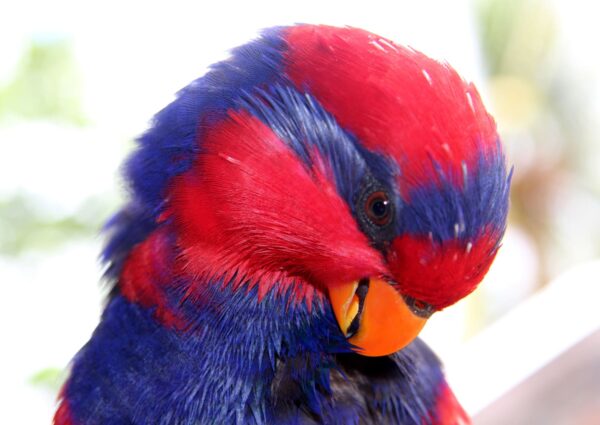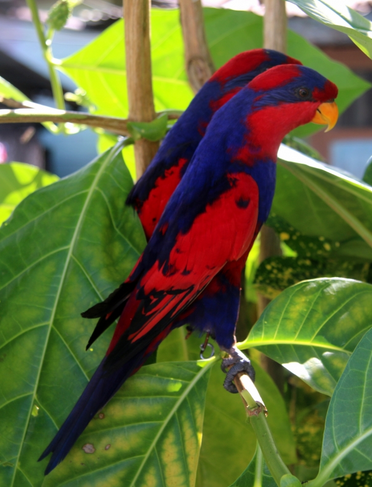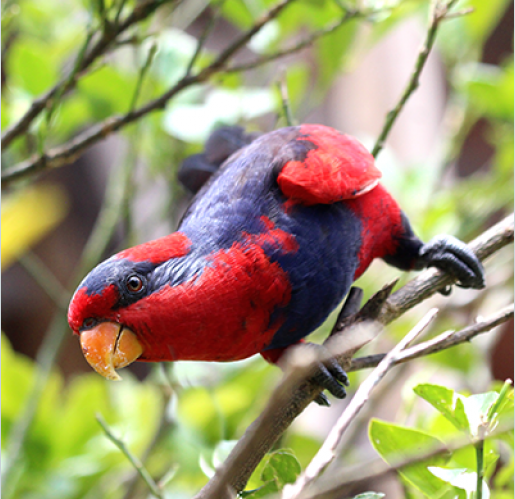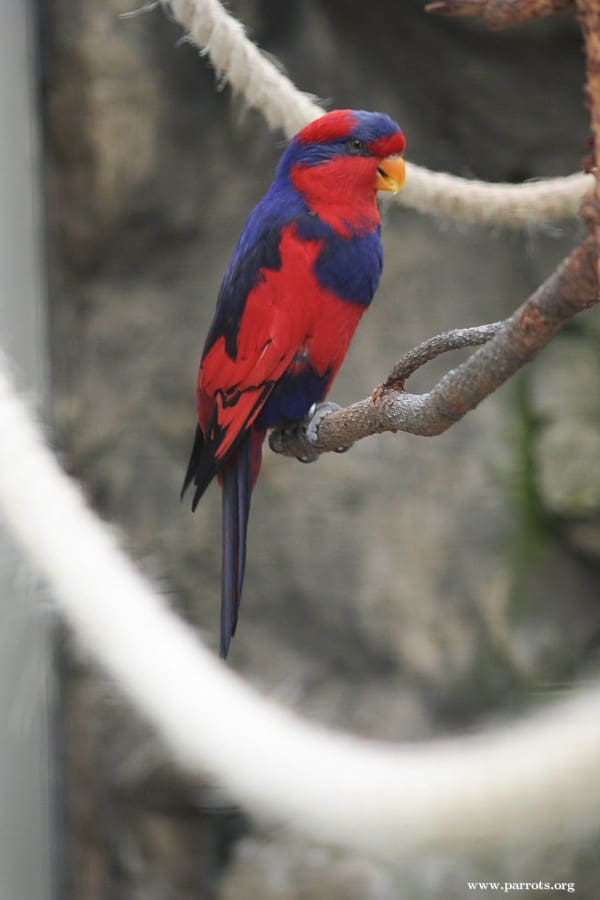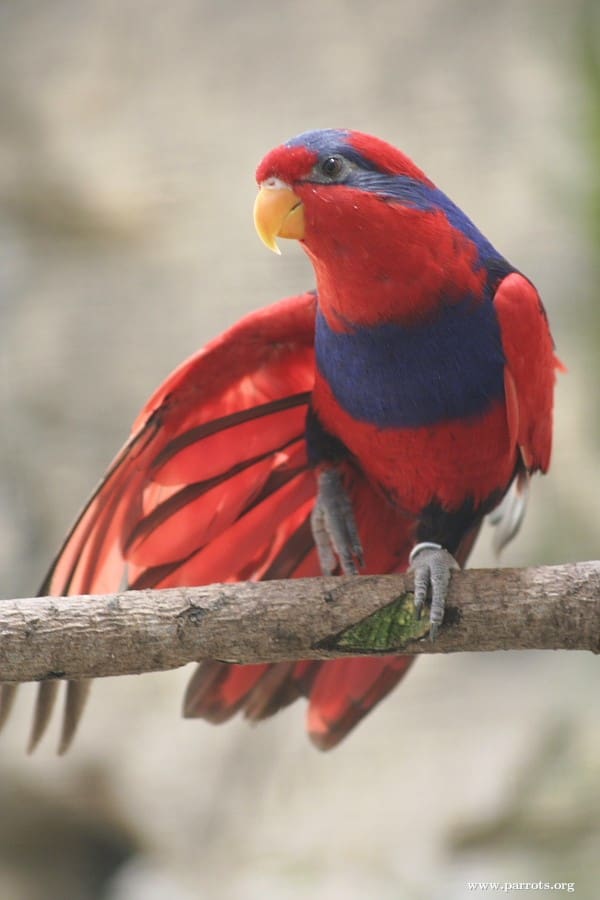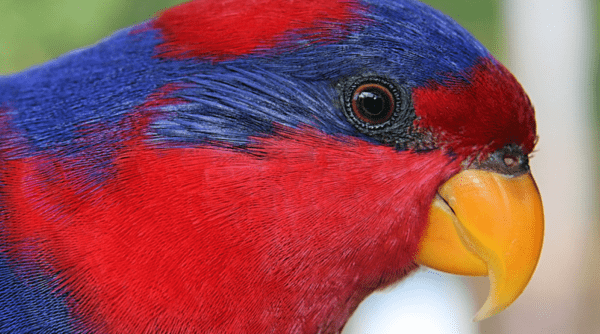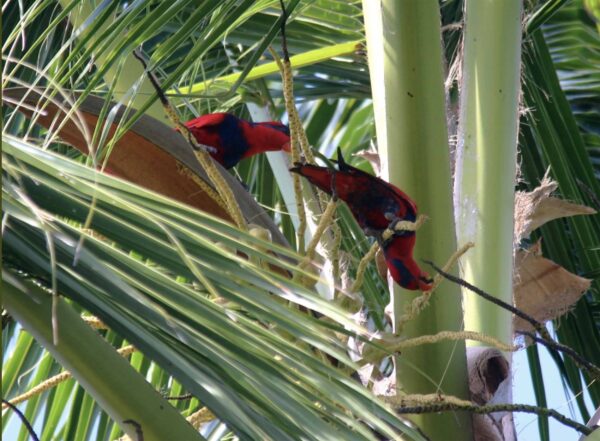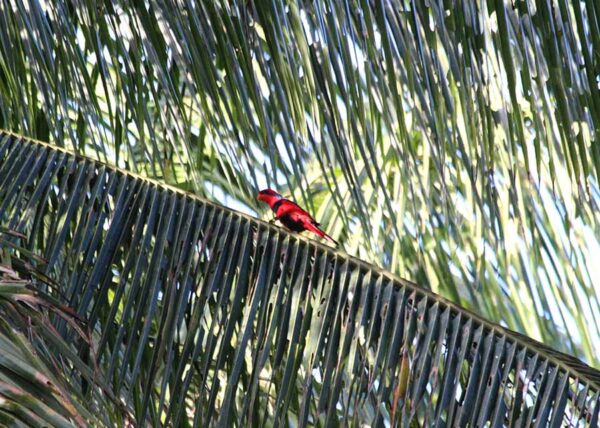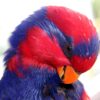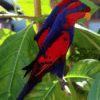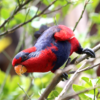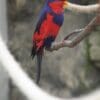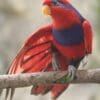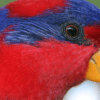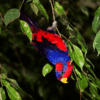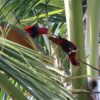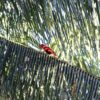Red-and-blue Lory
Also known as:
Blue-tailed Lory, Blue-diademed Lory
Also known as:
Blue-tailed Lory, Blue-diademed Lory
DID YOU KNOW?
Red-and-blue Lories are sometimes seen flying from one island to another across large expanses of ocean.

Eos

histrio
Size:
31 cm (12.1 in)
Weight:
150-185 g (5.25-6.5 oz)
Subspecies including nominate:
three: E.h. histrio, E.h. talautensis, E.h. challengeri
Colour Adult:
E.h. histrio: Both adults mainly red in colour; wide purple/blue band on hindcrown; blue/lilac band from eye through ear coverts and sides of neck, meeting dark blue/purple of mantle and upper back; wide blue strip across chest; thighs black; undertail coverts washed blue; red/purple tail. Eye red.
E.h. talautensis: Both adults as in histrio but with less black on wing coverts.
E.h. challengeri: Both adults less blue strip on breast mixed with red; blue band from eye not extending to mantle; smaller in size.
Colour Juvenile:
E.h. histrio: Blue wash on feathers of head and breast; blue on crown reaches nape and to below eyes; less obvious breast strip; thighs dull lilac. Eye brown.
E.h. talautensis: As in adults.
Call:
Screeches and whistles in flight, quiet while feeding.
More Information:
Content Sources:
CITES
BirdLife International
Cornell Lab of Ornithology/Birds of the World
A Guide to Parrots of the World, Juniper and Parr, 1998
Parrots of the World, Forshaw, 2006. 2010 edition
Lexicon of Parrots, Thomas Arndt.
Parrots in Aviculture, Low, 1992.
Captive Status:
Very uncommon.
Longevity:
10-15 yrs.
Housing:
3 x 1 x 2 m (9.8 x 3.3 x 6.5 ft) enclosure with roosting box.
Diet:
Nectar made from baby cereal (lactose-free), honey and malt extract or molasses, mixed with water (bottled) with the addition of wheat germ, made fresh once or twice daily, or a proprietary type (store bought) for small species; as well fresh fruit such as: apple, orange, cactus fruits and bananas and a few vegetables (corn, green leaves, hardcooked egg, carrot).
Enrichment:
Hanging nectar bottles or cups around aviary, providing unsprayed browse with edible flowers, various chew and plastic toys (non-toxic); provide bowls of water for bathing.
Nest Box Size:
9″ x 9″ x 27″ (22.9 cm x 22.9 cm x 88.5 cm) vertical box.
Clutch Size:
2
Fledging Age:
8 weeks
Hatch Weight:
—
Peak Weight:
—
Weaning Weight:
—
World Population:
5500–14,000 mature individuals; nominate of species possibly extinct on Sangihe Is. Declining.
IUCN Red List Status:
Endangered
CITES Listing:
Appendix I
Threat Summary:
Restricted-range species. Habitat loss and overexploitation for trade have caused serious declines. Trapping, although illegal, continues with about 800 birds thought to be exported each year.
Range:
E.h. histrio: Sangihe Islands, Indonesia. Likely extinct.
E.h. talautensis: Talaud Islands, Indonesia.
E.h. challengeri: Nanusa Islands, Indonesia.
Habitat:
Forest and cultivated areas; up to 1250 m (4100 ft).
Wild Diet:
Diet includes coconut (Cocos nucifera) flowers and fruit and nectar of Ficus, Canarium, Lansium domesticum and Syzygium trees. Insects are also taken.
Ecology and Behaviour:
Most commonly seen flying in groups. Up to 8 birds seen. Large numbers gather together to roost. Very vocal at these gatherings.
Clutch and Egg Size:
2 eggs
Breeding Season:
April-May; also November-December depending on location. Nest is in hollow in large tree.
Related Links:
—
